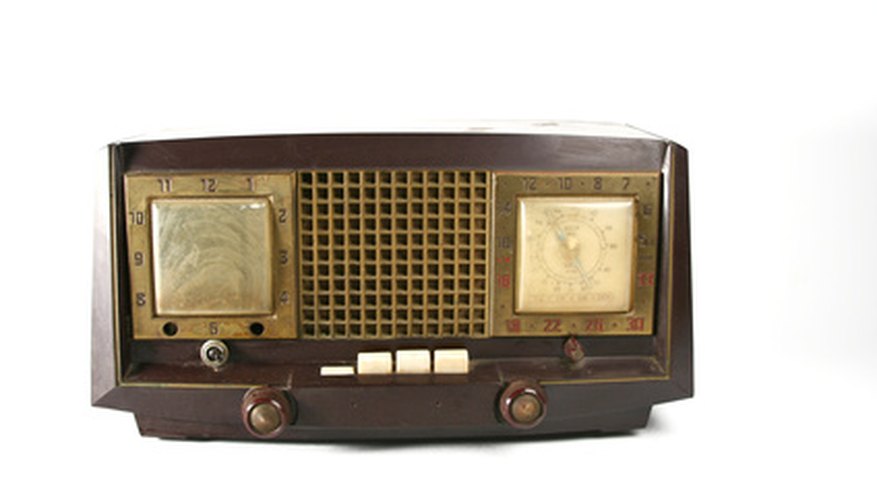Bakelite is a type of plastic that became popular during the first half of the 20th century. While at first Bakelite was used for industrial applications because of its electrical insulating properties, it was soon used in manufacturing anything from inexpensive costume jewellery to dinnerware. Many popular collectibles, such as antique radios and telephones, are made from Bakelite. Because Bakelite objects are so often collectable, it is often necessary to perform minor repairs when restoring Bakelite to its original condition. Follow these steps to securely glue Bakelite pieces back together.
- Bakelite is a type of plastic that became popular during the first half of the 20th century.
- Many popular collectibles, such as antique radios and telephones, are made from Bakelite.
Wear latex or rubber gloves to protect your skin. Clean the Bakelite pieces carefully in a solution of 10 per cent ammonia and clean, warm water with a few drops of dish soap added. Use a soft scrub brush or toothbrush to clean any debris out of the cracks. Rinse each piece under cold running water. Dry each piece completely.
Test fit the pieces together. Use the rubber bands to hold the pieces secure as you want the piece to be assembled. When you are satisfied with the arrangement of the rubber bands, disassemble the Bakelite item.
- Test fit the pieces together.
- Use the rubber bands to hold the pieces secure as you want the piece to be assembled.
Mix the Araldite epoxy according to the instructions on the package. Stir with a toothpick to ensure that the two ingredients are mixed thoroughly.
Use the toothpicks to apply a very thin coat of mixed epoxy to both sides of the break. Reassemble the Bakelite piece.
Dampen a clean rag with acetone and use it to remove any excess epoxy from the break.
Reapply the rubber bands to secure the piece. Do not remove the rubber bands or disturb the piece for at least 90 minutes at room temperature.
TIP
Do not use too much epoxy. A layer only 0.002- to 0.004-inch thick will provide the best bond.
WARNING
Do not allow the epoxy to touch bare skin.
